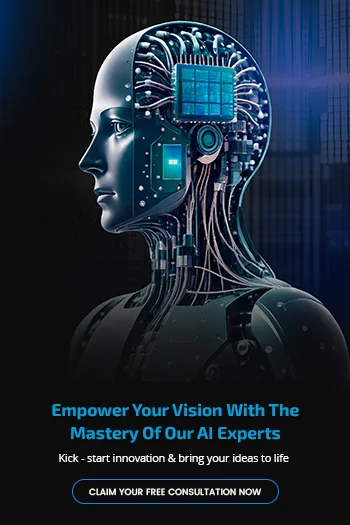AI chatbots are essential for immediate, tailored, and scalable customer experiences as artificial intelligence rapidly evolves. Today’s digital landscape requires AI chatbot development skills for business owners automating customer service, evelopers investigating conversational AI, and entrepreneurs creating the next big thing. This thorough guide covers how to build AI chatbots from fundamental concepts to implementation, cost concerns, and optimization tactics to maximize value.
Understanding AI Chatbots: Foundation and Benefits
What's AI Chatbot?
Why Build AI Chatbots?
- 24/7 AI chatbots respond instantly regardless of time zones or business hours, ensuring customers receive support whenever needed without the expenditures of 24/7 human care.
- A single chatbot performs infinite simultaneous chats, scaling easily during peak periods without additional resources or service quality degradation.
- Cost Efficiency: Chatbots automate routine questions, freeing human agents to handle complicated situations that demand empathy and judgment. Initial development involves investment.
- Consistency: AI chatbots provide consistent information and experiences throughout all conversations, eliminating service quality variations caused by human agents’ skill levels or emotions.
- Each encounter creates significant data about client demands, pain areas, preferences, and behavior patterns that guide business strategy and product development.
- Modern AI chatbots may speak various languages, improving business reach without increasing support manpower.
Types of AI Chatbots
Rules-Based Chatbots
An AI-powered chatbot
Chatbots with Voice
Chatbot hybrids
Steps to Build AI Chatbots: Complete Development Process
- Step 1: Define Purpose and Use Cases
- Step 2: Choose Your Development Approach
- Step 3: Design Conversation Flows
- Step 4: Select AI Chatbot Development Tools and Technologies
- Step 5: Develop and Train Your Chatbot
- Step 6: Test Thoroughly
- Step 7: Deploy and Monitor
- Step 8: Optimize and Iterate
Cost Breakdown: How Much Does It Cost to Build AI Chatbots?
Hybrid Approach: Platform tools with custom components cost $15,000–$150,000, depending on customization.
Costs of platform and subscription
AI Platform Fees to Build AI Chatbots: Basic tiers cost $0-$500 per month, professional plans $500-$2,000, and corporate solutions with enhanced capabilities and greater usage limitations $2,000-$10,000+.
Ongoing Costs
Total Ownership Cost
Common Mistakes to Avoid
- Overcomplicating First Versions: Overambition delays launches, overspends, and overwhelms personnel. First focus, then expand.
- Lacking Conversation Design: Strong AI can’t fix bad talks. Invest in UX design before tech implementation.
- Insufficient Training Data: Underfed AI models are inaccurate. Fund comprehensive training data collection and curation.
- Context-free conversations sound robotic. Use context tracking for smooth interactions.
- Chatbots cannot do everything. Create explicit escalation channels to human agents for complex situations.
- Lack of Integration Planning: Chatbots without business systems help little. Plan integrations early in development.
- Lack of Testing: Launching without testing affects user trust. Test widely across scenarios, devices, and users.
- Forgetting Maintenance: Chatbots need constant care. Spend on continual improvement, not just development.
Future Trends to Build AI Chatbots Development
Multimodal Interactions: In Future, to build AI chatbots will seamlessly combine text, voice, images, and video for richer communication experiences.
Emotional Intelligence: Advanced sentiment analysis and emotional AI will enable chatbots to recognize and respond appropriately to user emotions.
Hyper-Personalization: Leveraging comprehensive user data, chatbots will deliver increasingly personalized experiences tailored to individual preferences and contexts.
Predictive Capabilities: AI will anticipate user needs and proactively offer assistance before users ask, transforming reactive support into predictive service.
Seamless Omnichannel Experiences: Conversations will flow naturally across channels—web, mobile, voice, messaging—maintaining context throughout.
Advanced Language Understanding: Improved NLP will handle increasingly complex queries, nuanced language, industry jargon, and multilingual conversations effortlessly.
Integration with IoT: Chatbots will connect with Internet of Things devices, enabling voice control of physical environments and smart automation.
Expert Tips to Build AI Chatbots Development
Start Simple, Iterate
User Experience First
Invest in Quality Training Data
Expect Failure Gracefully
Measure What Matters
Keep Transparency
Cultural and linguistic nuances
Implement Strong Security
Design for Scalability
Record Everything
Conclusion
Learning how to build AI chatbots represents a valuable skill set for businesses and developers navigating today’s digital landscape. Whether choosing no-code platforms for rapid deployment or pursuing custom AI chatbot development for maximum flexibility, the comprehensive steps to build an AI chatbot creation guide provide a roadmap from conception through optimization.





